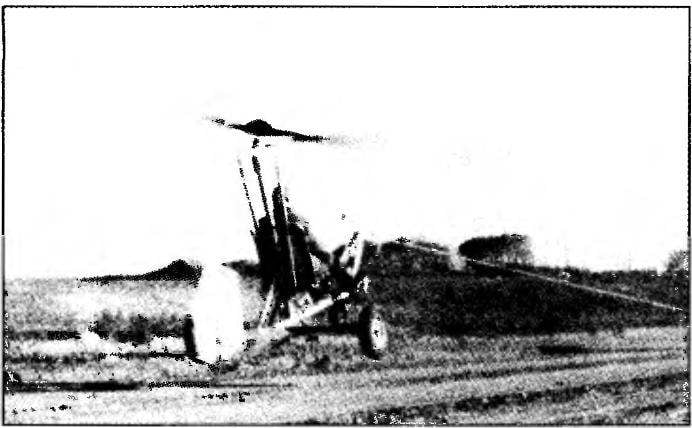You should also check the alignment of the gyro with the pilot hanging aircraft for the axis of the rotor. The mast should be tilted forward four degrees. If the angle of other (more or less), it is necessary to change the location of any load, such as a battery, the pilot’s seat, etc. Or, as in our case, change the configuration of the bracket plates of the rotor head, thereby moving the position of the axis of the rotor.
Plate bracket rotor head rotor (D16T, 2 PCs. mounting holes not shown are drilled on the spot)
Fixture for measuring the thrust pusher propeller on the ground:
1 — the support (wall, post, tree); 2 — bracket; 3 — dynamometer (spring scale); 4 — lever; 5 — wire rope d5; a,B — lever arm (the ratio of their lengths is selected depending on the measuring range of the dynamometer)
After tuning the engine and check the alignment of the gyro you can start taxiing on the ground and test flights.
RECOMMENDATION: develop skills to control gyroplane on the ground and in the air
Start the engine and warm it. Left hand spin the rotor blades of the propeller and increasing grip throttle speed pusher propeller, go for a run.
Low speed and observe the direction of movement with the front driven wheel, and when it comes off the ground — with an air rudder. Adjusting the position of the axle of the main air screw handle control of the gyroplane, achieve this state of equilibrium in motion, when neither the front nor the tail wheel does not touch the ground.
All turns and perform smoothly with a large radius. If you feel that the gyro is starting to get off the ground, and immediately relieve “gas”. Practice for half an hour. Only then you will be equipped with management skills.
Then you can move on to the test flights. Increase the frequency of rotation of the crankshaft of the engine and, once started, remove the gyro from the flight Posadas-strips. But immediately reset the “gas” and put in the car. Make sure that first touched the ground the tail wheel! All this should be done only against the wind.
Again increase the thrust pusher propeller, and repeat all its previous actions. Note the speed at which occur the take-off and landing—in the future it will need.
Having mastered these “jumps”, start real flights. At first, selecting a suitable location, fly straight, and then begin to master the bends. Keep in mind that the rudder is ineffective at altitude. Therefore, in the air turn, moving the axis of the rotor in the required direction. To maintain a constant height when cornering increase the thrust of the pusher propeller.
It may be that the rod is insufficient, especially for take-off. In this case, try to get off the ground in tow behind the car. After dialing the desired height, release the tow rope and continue your flight on your own. Of course, you will have to continue to boost engine since the greatest power is required for takeoff.
And some important tips. Before the flight the gyroplane walk around and make sure of reliability of fastening of all its parts. Check the fuel tank and record the fluid filler plug.
Don’t forget to wear a motorcycle helmet and goggles.
Finally, never fly over populated areas. And the air always inspect and analyze the surroundings for the event of a forced landing.
Have a good flight and maximum enjoyment from them!
R. MERKULOV, air force Colonel, retired, Professor

